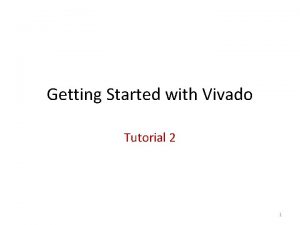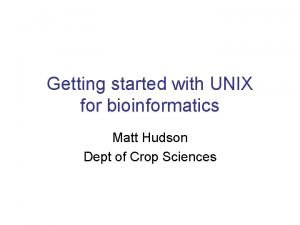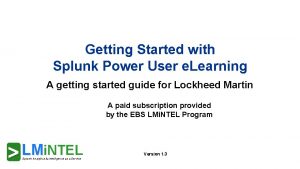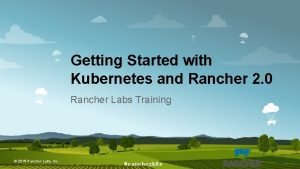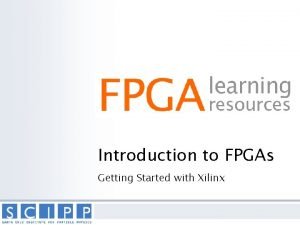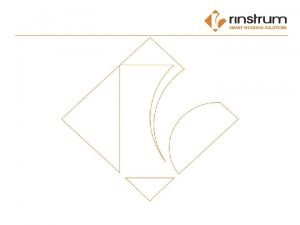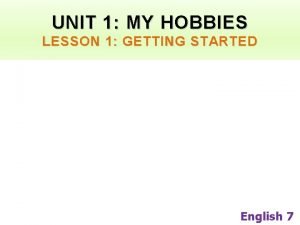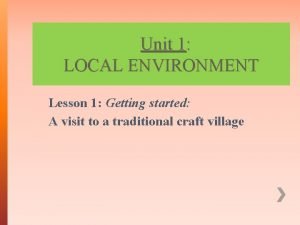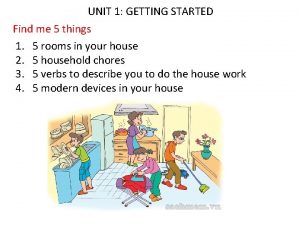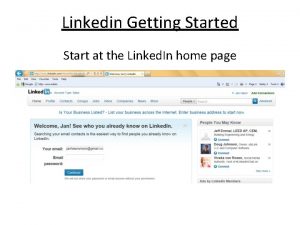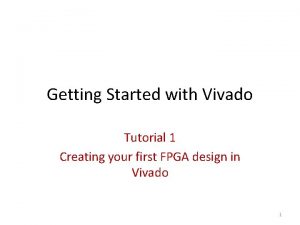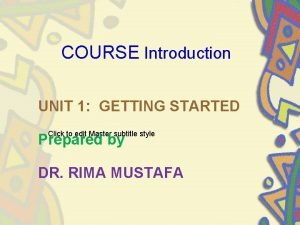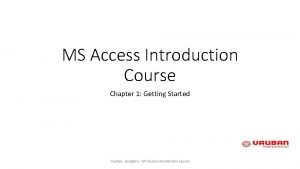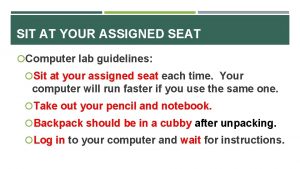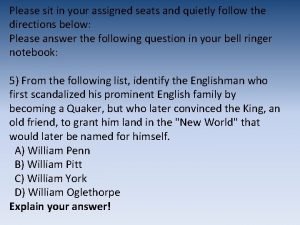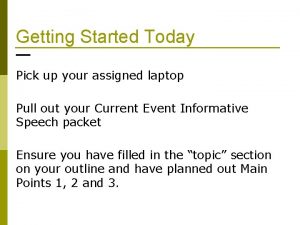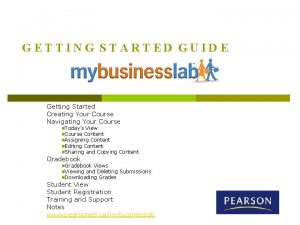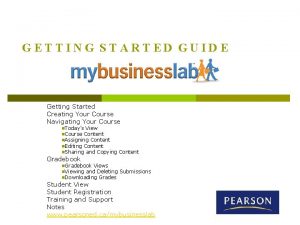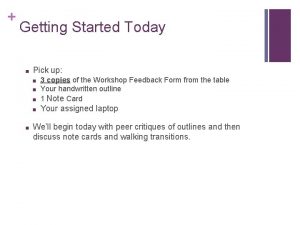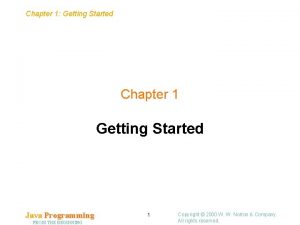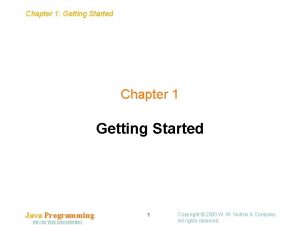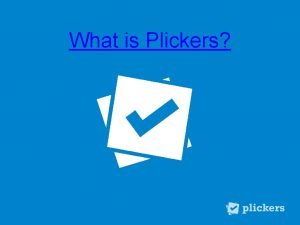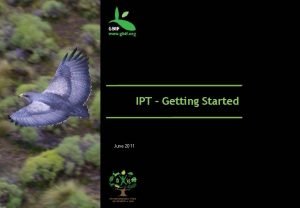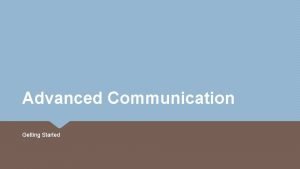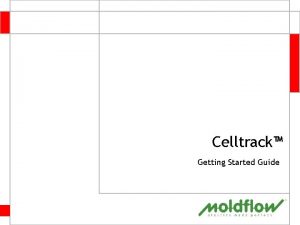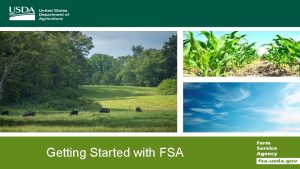Getting Started Today Pick up your assigned laptop

























- Slides: 25

Getting Started Today Pick up your assigned laptop Pull your Current Event Informative Speech Packet Open your Research Assignment document from last class (if not yet submitted, due today for late credit)

Organizational Patterns: Informative

Organizational Patterns Informative • Topical • Chronological • Spatial Persuasive • Cause-Effect • Problem-Solution • Monroe’s Motivated Sequence • Refutation • Narrative • Comparative Advantage

Topical • “Categorical Pattern” • Used when main points are subpoints of speech topic • Example: – Topic: Living in DFW – Main Point 1: Job opportunities – Main Point 2: Housing and Education – Main Point 3: Entertainment & Night Life

Chronological • “Temporal Pattern” • Arrangement based on timeline – Newest to oldest; oldest to newest • Example: – Topic: Cold War – Main Point 1: World War II (1940 s) – Main Point 2: Korea & Vietnam (195060 s) – Main Point 3: Fall of Communism (1980 -90 s)

Spatial • Based upon physical proximity – Closest to furthest, E to W/N to S, etc. • Example: – Topic: Home Landscape Design – Main Point 1: Near house – shrubbery – Main Point 2: Lawn – care / maintenance – Main Point 3: Curb appeal – flowers, accent items

Examples • Dogs – Getting a dog • Breeders vs. • Shelters vs. • Pounds – First year • “Potty” training • Obedience training – Care / development • Proper diet • Exercise • Developmental stages

Examples • Dialects – Northeast • Fast rate of delivery • Less willing to talk • Specific language – Midwest • Moderate desire • Specific language – South (Texas) • Slower rate • Very willing to talk • Specific language

Organizational Patterns: Informative


Outlining

Outlining Process • • Step 1: Specific Purpose Step 2: Thesis Step 3: Main Points Step 4: Organize Your Research (apply the organizational pattern) • Step 5: Introduction & Conclusion • Step 6: Transitions – Preview-Review, Signposts, etc.

Benefits of Good Organization • Improved audience comprehension • Increased credibility • More positive attitude by audience about speech

Overview • Introduction – “Tell ‘em what you’re gonna to tell ‘em” • Body – “Tell ‘em” • Conclusion – “Tell ‘em what ya told ‘em”

Speech Body • Main points – “express the key ideas and major themes of a speech. ” – Should flow from thesis and specific purpose – General rule: 2 - 5 main points (typically 2 - 3) • Too many points? → Is topic narrow enough? ? • Prefer depth (interesting) over breadth (boring? )

Parallelism • Non-example – Topic: Wars for Independence – Main Points: • The US got it’s independence from Britain • Spain lost Mexico after Napoleon's conquest of Europe • Canada didn’t have to fight

Parallelism • Example – Topic: Wars for Independence – Main Points: • The US fought for independence from Britain during the Revolutionary War • Mexico earned independence from Spain after a brief war • Canada was granted independence by Britain without war

Subpoints • “Supporting Points” – Stories, statistics, examples, etc. – Places to start: the 5 Ws • Who, what, when, where and why? (also how? ) – On Informative Speech Outline • “(details)” • Want 2 – 3 “details” per main point • May be from 1 source (or 2 – 3 different sources)

Main Points vs. Subpoints • Topic: History of Jazz – Jazz in the 1800 s – Dixieland/New Orleans – Kansas City – Bebop – Latin Jazz – Funk-based – Jazz rap – Electronica • Topic: History of Jazz – Early jazz • 1800 s • Dixieland/N. O. Jazz – The “classics” • Kansas City • Bebop – Modern Jazz • Latin, Funk • Jazz rap, Electronica

Transitions • Also known as “signposts” • Types – Restate-forecast form – Rhetorical question (but not as introduction…) – Internal preview – Internal summary

Transitions • What are NOT good transition phrases – “firstly, secondly, etc. ” – “in conclusion” or “in summary” • “Good” transition phrases – “First, let’s look at …” – “Next, we’ll discuss…”

Types of Outlines • Preparation Outline – Full-sentence outline of declarative sentences • Written as you would present information in the actual speech – Should NOT be “memorized” – Used to plan/story-board speech – Ex: Speech Outline Template

Types of Outlines • Presentation Outline – “delivery” or “key word” outline – Comes AFTER working outline → “whittle down” – Used for note cards (3 x 5”) – 1 – 3 words per item (except for quotes) • For “recall” purposes only (i. e. a “hint”)

Outlining Process • • Step 1: Specific Purpose Step 2: Thesis Step 3: Main Points Step 4: Organize Your Research (apply the organizational pattern) • Step 5: Introduction & Conclusion • Step 6: Transitions – Preview-Review, Signposts, etc.

Outlining
 The secret to getting ahead is getting started
The secret to getting ahead is getting started Getting started with vivado ip integrator
Getting started with vivado ip integrator Getting started with unix
Getting started with unix Splunk free training
Splunk free training Rancher slack channel
Rancher slack channel Getting started with excel
Getting started with excel Outlook tutorial 2010
Outlook tutorial 2010 Counter code
Counter code Lua getting started
Lua getting started Unit 1 my hobbies
Unit 1 my hobbies Unit 1 getting started
Unit 1 getting started Unit 1 getting started
Unit 1 getting started Infuecers gone wild
Infuecers gone wild Getting started with vivado
Getting started with vivado Perl read_file
Perl read_file Getting started with ft8
Getting started with ft8 Unit 2 listen and read
Unit 2 listen and read Unit 1 getting started
Unit 1 getting started Getting started with poll everywhere
Getting started with poll everywhere Android development getting started
Android development getting started Tipos de habilidades del pensamiento
Tipos de habilidades del pensamiento Getting started with eclipse
Getting started with eclipse Hakan kutucu
Hakan kutucu Sit in your assigned seat
Sit in your assigned seat Sit in your assigned seat
Sit in your assigned seat Sit in your assigned seat
Sit in your assigned seat

